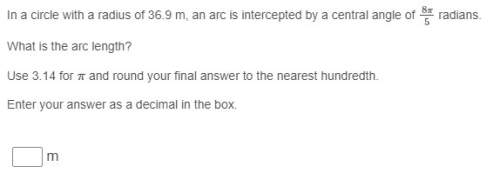
Mathematics, 12.11.2019 00:31 wyseguy8971
The earth is 1.5 ✕ 1011 m from the sun and takes a year to make one complete orbit. it rotates on its own axis once per day. it can be treated approximately as a uniform-density sphere of mass 6 ✕ 1024 kg and radius 6.4 ✕ 106 m (actually, its center has higher density than the rest of the planet, and the earth bulges out a bit at the equator). using this crude approximation, calculate the following. (a) what is vcm?

Answers: 2


Other questions on the subject: Mathematics

Mathematics, 21.06.2019 16:20, PONBallfordM89
Abby is preparing fruit punch for her party. she starts with a bowl filled with liquid that has 1/2 fruit juice and 1/2 sprite, but she decides it's too fruity. so she pours out 1/4 of the liquid, and then fills the bowl up again with sprite. what fraction of the punch is now sprite?
Answers: 1

Mathematics, 21.06.2019 17:00, liaholmes8
Given f(x)=2x^2-8x+6 and g(x)=3x-1 find f(x) +g(x) a. 2x^2+5x+5 b.2x^2-11x+7 c. 2x^2-5x+5 d.2x^2-5x-5
Answers: 1

Mathematics, 21.06.2019 17:30, babygirl226
Select the correct answer from the drop-down menu. subtracting 3xy^2 from 8xy^2 gives the same result as the expression. [tex]3xy ^{2} - 8xy ^{2} [/tex][tex] { - 7xy}^{2} - {2xy}^{2} [/tex][tex] {7xy}^{2} - {2xy}^{2} [/tex]
Answers: 3

You know the right answer?
The earth is 1.5 ✕ 1011 m from the sun and takes a year to make one complete orbit. it rotates on it...
Questions in other subjects:

Mathematics, 20.04.2020 05:55





Mathematics, 20.04.2020 05:55


Mathematics, 20.04.2020 05:56





